A colourful variety - Your guide to seasonal fruit and vegetables in autumn
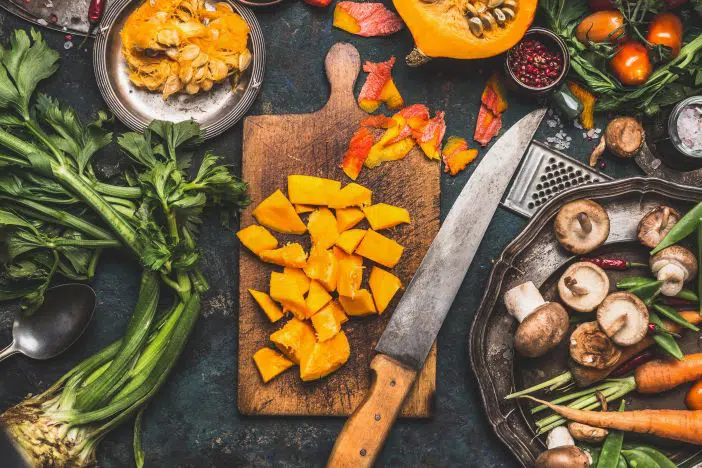
The nights are getting longer, the outside temperatures are falling and the forests are shining in golden-yellow tones. The time has come, summer is coming to an end and autumn is just around the corner. However, it is not only nature that changes with the new season, but also the seasonal vegetables and fruits on offer.
Seasonal calendar - Which fruits and vegetables are available in autumn?
Whether it’s a creamy pumpkin soup or crispy pumpkin wedges from the oven – everyone recognises the orange coloured vegetable. However, autumn has many more vegetables and fruits to offer than just the classic pumpkin. The following chart shows which fruits and vegetables are available to us.
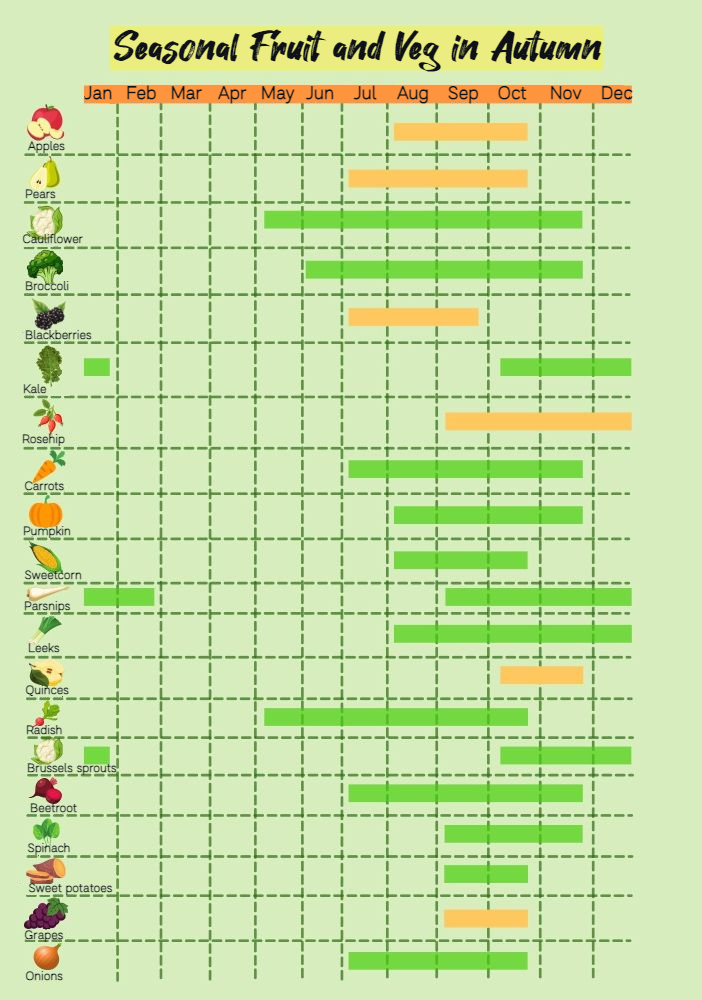
Autumn vegetables - Regional superfoods
In the following paragraphs you will learn which autumn vegetables are particularly healthy and why you should integrate these in your meals.
Spinach
The green vitamin booster comes from the Middle East. Spinach consists of 91 percent water and therefore contains very few calories. It is therefore ideally suited for a low-carb diet. In addition to this, it is packed with numerous vitamins, minerals and secondary plant substances. For example, the green vegetable is a good source of beta carotene, vitamin K as well as vitamin C. For some time spinach was also considered “the vegetable” for the best source of iron. However, there was a mistake here: it was assumed that 100g of spinach contains 35 mg of iron, but this was spinach powder and not fresh spinach. Due to its very high water content the iron content of fresh spinach is much lower with 4.1 mg per 100 g. Nevertheless, it is a good source of iron compared to other vegetables.
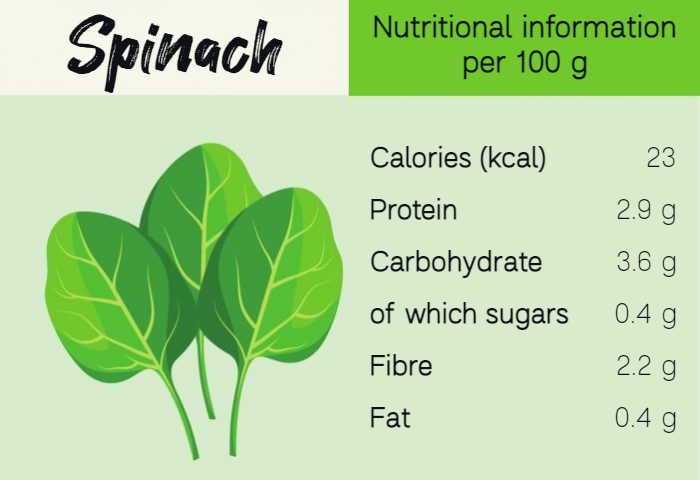
Sweet Potato
The orange tuber originates from Central and South America. Like the potato, it also belongs to the tuberous plants, but is only distantly related to it. The potato belongs to the nightshade family, whereas the sweet potato belongs to the morning glory family. There are numerous ways to prepare the tuber: you can cook them, bake them in the oven to make sweet potato fries or even snack on them raw. The peel can be eaten as well, you don’t have to remove it. Sweet potatoes contain a lot of beta-carotene, which is converted by the body into the fat-soluble vitamin A, which is important for our eyes and skin.
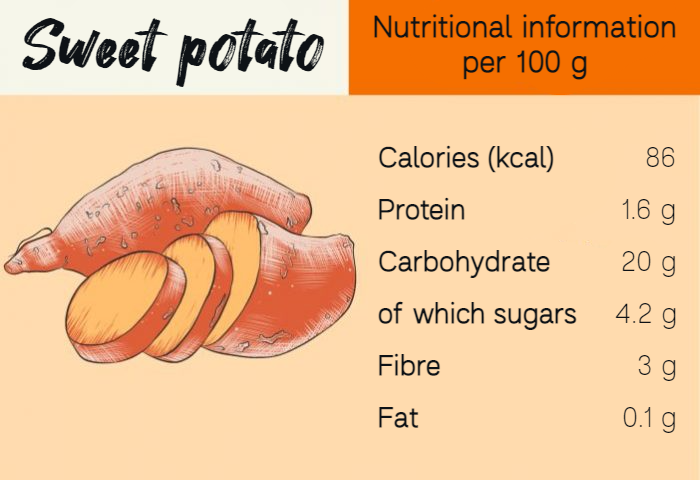
Fruits in autumn
You want to know why we should eat 2 apples a day and why rosehip is so special? Find out more in the next part of the article.
Rosehip
The rose hip belongs to the rose family. You should be careful of the small seeds that are inside, as they can cause itching or cause allergies. Once the seeds are removed, the rose hip can also be eaten raw. The best-known way to eat rose hips, however, is rose hip tea or rose hip jam. The high vitamin C content of the small fruit is remarkable: it has 60 times the vitamin C content of an orange. Vitamin C promotes collagen production, prevents scurvy and ensures the health of blood vessels. In addition, rose hips are rich in calcium and potassium. Since rose hips have an anti-inflammatory effect, they are also suitable for joint diseases such as arthrosis or rheumatism.
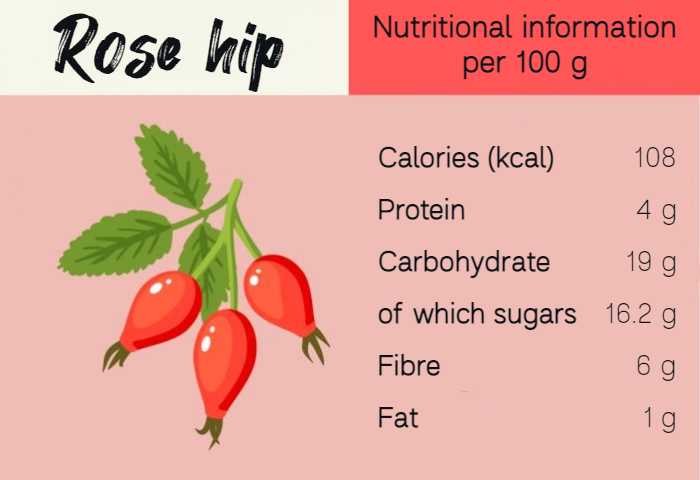
Apples
“An apple a day keeps the doctor away.” There is some truth in this well-known saying: An English research team from the University of Reading found that eating apples every day keeps cholesterol levels in check and reduces the risk of heart disease. However, according to the researchers, it shouldn’t just be one apple, but two. More than 30 vitamins and trace elements are contained in this round superfood. Apples help with weight loss, among other things, because they hardly contain calories due to their high water content, which is about 85 percent. Our intestines are particularly happy about the digestible fruit, which consists of a combination of dietary fibre, polyphenols and flavonoids.
Some people remove the apple peel, which is a pity, because a large part of the vitamins contained in the apple are in the apple peel or directly under the peel. So it’s best to always wash the apple well and then enjoy it together with the peel.
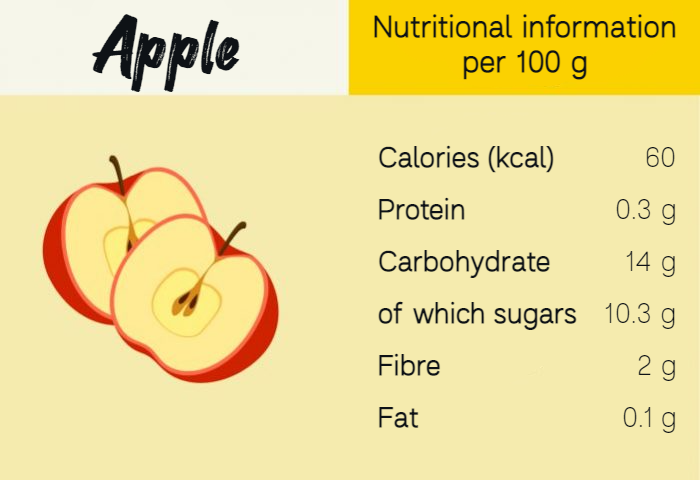
Regional, healthy and good for the planet
Whether it’s watermelon, raspberries or bananas, all kinds of fruit and vegetables can be found in the supermarket in both summer and winter. However, there are some reasons why it is worth filling the shopping basket with regional autumn fruits and vegetables.
On the one hand, seasonal produce does not require energy for heated greenhouses, as the autumn vegetables grow outside in the fresh air. On the other hand, no long transport routes by ship or plane are necessary, resulting in less CO2 emissions, making regional shopping more environmentally friendly. In addition, when you buy regional and seasonal products from your local supermarket or farm, you know exactly where the products you buy come from. Regional food contains more vital and nutritious substances compared to imported goods, as it is harvested ripe on site.
Frequently Asked Questions
What exactly are autumn vegetables?
As the name suggests, autumn vegetables are vegetables that are harvested in autumn. As autumn is a relatively cold time of year, autumn vegetables are well equipped to withstand the low temperatures and are particularly cold-tolerant. Most autumn vegetables are mainly used for hearty dishes and rustic recipes.
What can you plant in autumn?
There are many vegetables that grow even in colder temperatures. Some of them are particularly suitable for a raised bed. These include cauliflower, radish or broccoli. Lettuce varieties such as lamb’s lettuce, head lettuce or endive are particularly suitable for the greenhouse. There they are protected from too much cold, rain and wind. For the outdoor garden bed, you should really only plant vegetables that can tolerate cold. These vegetables include kale, chard, and also parsnips.
What fruit and vegetables are there in autumn?
In autumn, you will mainly find salads or cabbage vegetables such as beetroot, kale, cauliflower and broccoli in the supermarket or local shop. The range of fruit on offer is rather limited at the cold time of year. Nevertheless, autumn does have some fruits on offer, such as apples, figs or quince.
Sources
- https://academic.oup.com/ajcn/article/111/2/307/5675325
- https://www.regional-saisonal.de/saisonkalender-gemuese
- https://www.zentrum-der-gesundheit.de/ernaehrung/lebensmittel/obst-fruechte/apfel
- https://www.zentrum-der-gesundheit.de/ernaehrung/lebensmittel/gemuese/suesskartoffel
- https://www.hagebutte.org/
- https://www.zentrum-der-gesundheit.de/ernaehrung/lebensmittel/gemuese/spinat
